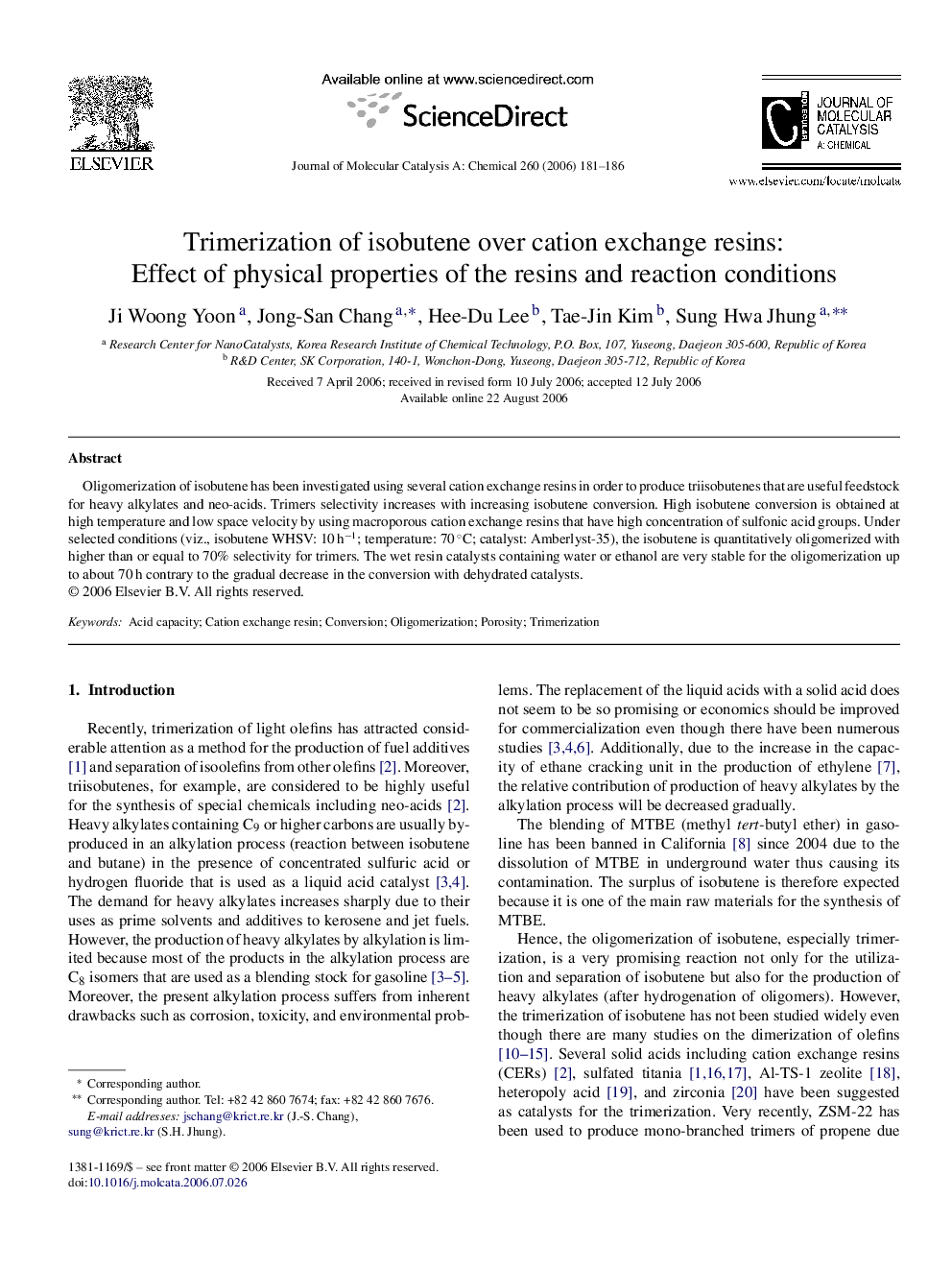| Article ID | Journal | Published Year | Pages | File Type |
|---|---|---|---|---|
| 68347 | Journal of Molecular Catalysis A: Chemical | 2006 | 6 Pages |
Oligomerization of isobutene has been investigated using several cation exchange resins in order to produce triisobutenes that are useful feedstock for heavy alkylates and neo-acids. Trimers selectivity increases with increasing isobutene conversion. High isobutene conversion is obtained at high temperature and low space velocity by using macroporous cation exchange resins that have high concentration of sulfonic acid groups. Under selected conditions (viz., isobutene WHSV: 10 h−1; temperature: 70 °C; catalyst: Amberlyst-35), the isobutene is quantitatively oligomerized with higher than or equal to 70% selectivity for trimers. The wet resin catalysts containing water or ethanol are very stable for the oligomerization up to about 70 h contrary to the gradual decrease in the conversion with dehydrated catalysts.
Graphical abstractIsobutene is quantitatively oligomerized with higher than or equal to 70% selectivity for trimers by using a cation exchange resin under selected conditions (viz., isobutene WHSV: 10 h−1; temperature: 70 °C). Figure optionsDownload full-size imageDownload as PowerPoint slide
